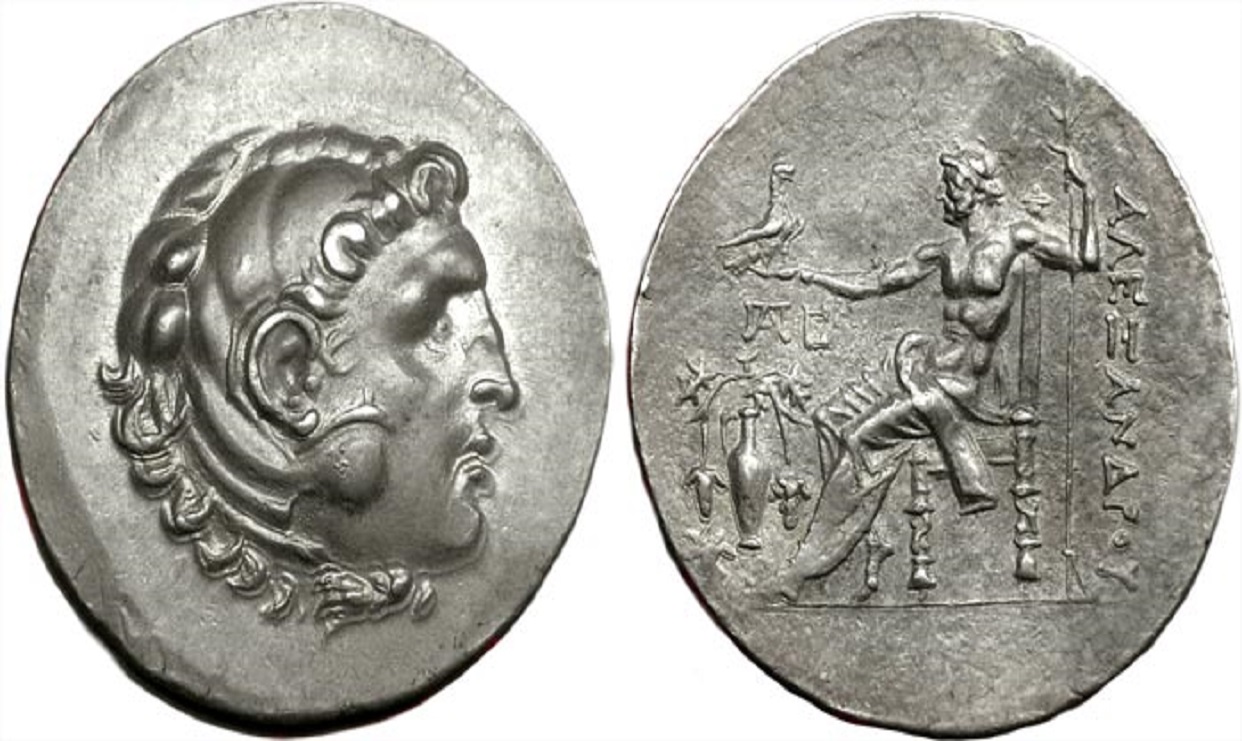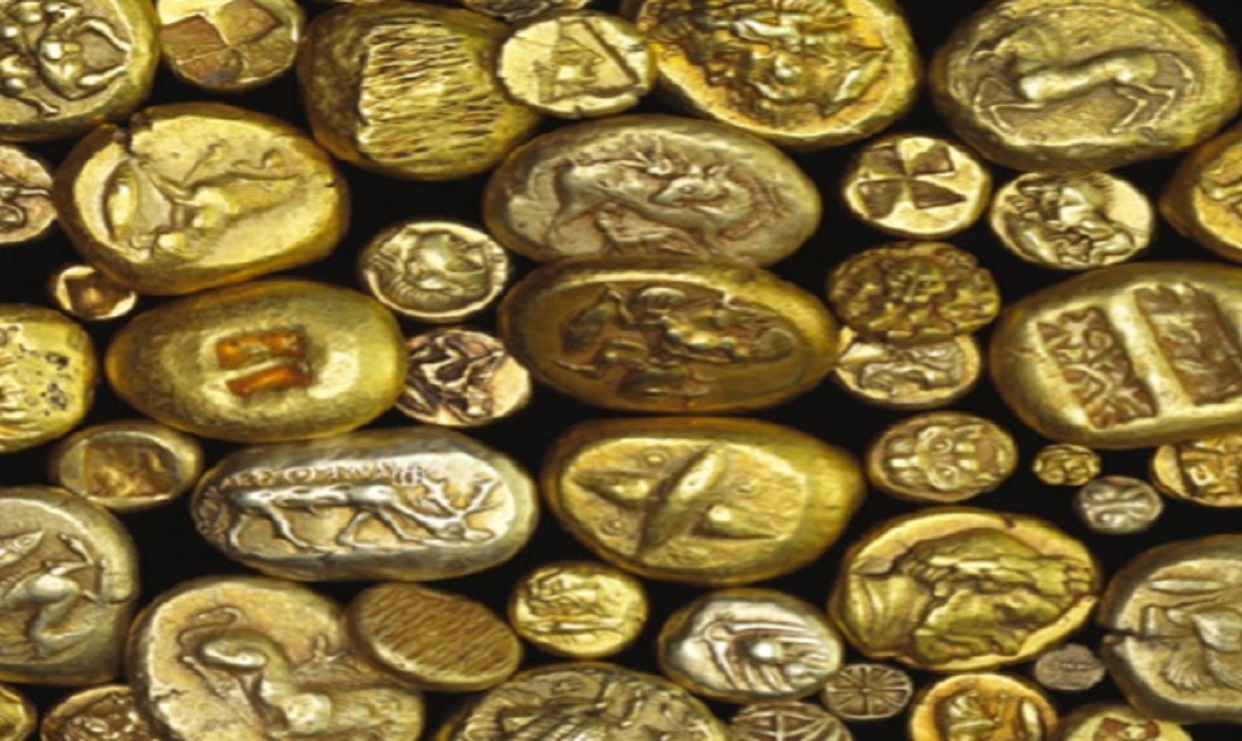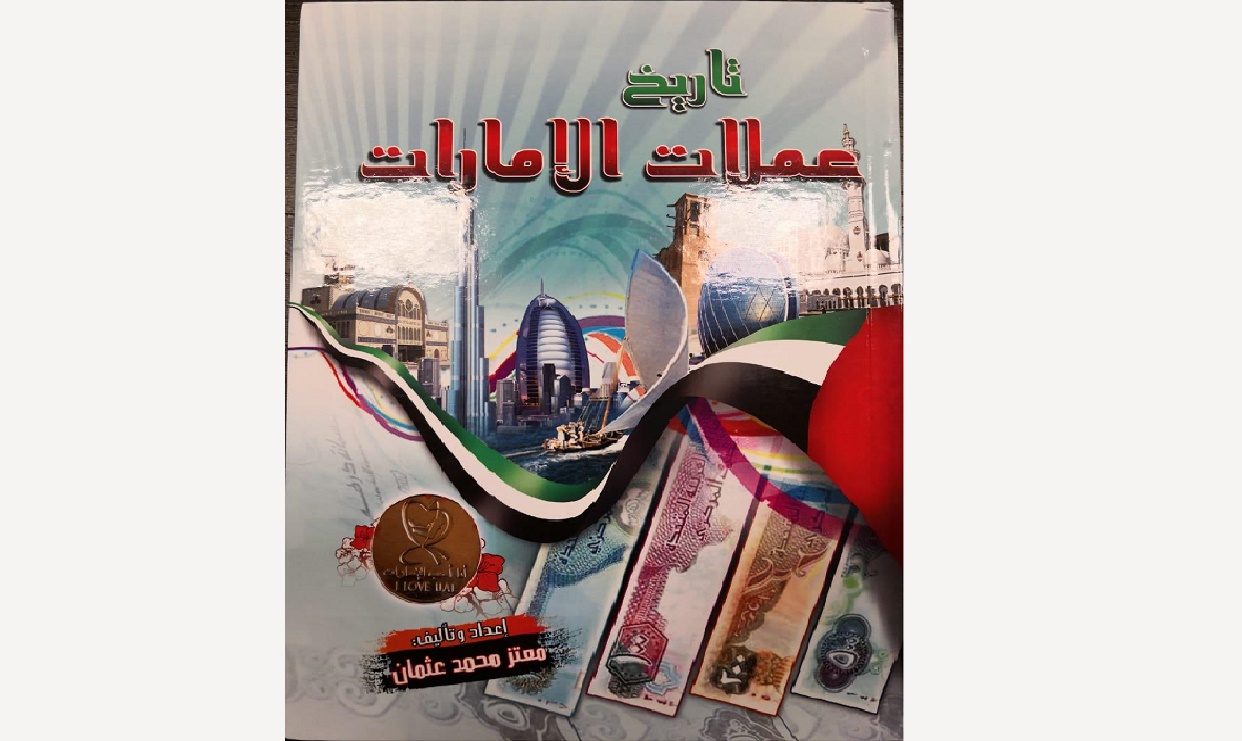4,542 عدد المشاهدات
Orbits and Inscriptions – Exclusive
Most historians agree that the Byzantines and the Sassanids were the first to mint coins in history, and that the Umayyad Caliph Abdul Malik bin Marwan minted the first Islamic coin in the seventh century, the Golden Umayyad Dinar, which was characterized by the phrase ‘There is no deity except Allah, He is alone and He has no partner’ in addition to the name of our Prophet Muhammad (PBUH).
In the Arabian Gulf, many currencies have been traded. Recent researches on the history of currency in the UAE confirm that the currency in the country, like other currencies of the world went through several stages. In this issue of Orbits and Inscriptions, we follow the history of currency in the UAE and the types and history of coins that have been traded in the region.

History and stages
The Arabian Peninsula, like other regions, used the barter system as a means of exchanging benefits and services. The first currencies traded in the region included solidus, the Golden Byzantine Dinar, and the Drakham, the silver Persian Sassanian Dirham. The Byzantine dinar was about ten Persian dirhams.
According to Dr. Moataz Mohammed Othman, the author of The History of the UAE’s Currencies, the currencies in the country passed through several stages. They were divided into two main stages, the first of which preceded the establishment of the union. The second stage was after the establishment of the state to the establishment of the Central Bank, and the issuance of the UAE Dirham.
As for the chronological trading of money in the UAE, those who are following and interested in this matter find themselves facing the dilemma of the overlapping between periods of trading of some currencies. However, according to the historic documentation and the consensus of experts and historians, the first currency exchange was in Roman coins dated 323 BC. Trade in these coins continued in the region until the advent of Islam, the end of the Roman and Byzantine Empire, and the era of Sasanian currencies. Gradually, some fundamental changes have been made to the symbols of those currencies to be converted into Islamic symbols.
There is an overlap of several currencies with each other, such as the periods of dealing with the currency “Taweelat al-Hessa” from 1480 to 1789, with the period of dealing with the Austrian riyal “Maria Theresa thaler”, in 1780, usually referred to as the French riyal.
In addition to the overlap of the Persian currencies from 1795 to 1825, with the Maria Theresa thaler. This overlap can be attributed to the absence of a regulating central banking authority to cancel the old coins when introducing new ones to the market, and also the lack of assistant currencies. For example, the entry and use of Persian currencies in the same trading phase of this riyal.

Specie and Circulation
The Gulf region was under the pressure of colonization, conflicts, mandate, the scourge of world wars, and the deliberate negligence of the Mandatory authorities to regulate the entry and withdrawal of currencies from markets, such as British Indian rupees, which played a role in the process of disruptions in currency exchange in the region.
There was an overlap between the rupee of the King and Emperor William IV with the rupee of Queen and Empress Victoria, where the ancient rupees were deliberately left until they were automatically canceled after a period, until we reach the stage of abstaining from dealing with the Indian-Gulf rupees, and where the country entered in the stage of preparing to put an end to this chaos, abandon foreign currencies, and think, as others, to issue a unified national currency.
In order to reach this stage, the currencies of Gulf countries, which preceded the issuance of the UAE national currencies, such as the Saudi Riyal, the Bahraini dinar, and the Riyal of Qatar and Dubai Currency Board, were used. In addition, with the announcement of the Union State on 2 December 1971, the state Dirham was issued. Thus, the newly born state put an end to subordination and eliminated the chaos of currencies in the market.
Dr. Moataz Othman shows that the historical development of currency in the country has passed through several stages before reaching the official currency currently being traded, the UAE Dirham. The historical references proved that the coins were traded first from 1600 until the union in 1971. The UAE, like the rest of the countries in the region, has had several coins, such as “Al-Areen or Taweelat al-Hessa”, or what was called Al-Malawiya, because of its distinctive shape that resembles hair clips. Taweelat al-Hessa had also some types resembling fishing hook that have been referred to by some researchers in the history of coins in the Gulf States. It is considered one of the oldest currencies traded in the region, especially in Kuwait. Another currency is Maria Theresa thaler known as the Austrian Riyal, usually referred to as the French Riyal. Several currencies were used beside it; for a period of time some Persian currencies were adopted (Shahis, Tawams and Qajaris). This currency was named after some of the ruling family in Persia at the time.

Trade with India
In 1830, the Indian-British Rupee entered to replace all previous currencies to maintain superiority in trading for a long period of time in the Trucial States and in most of the Arabian Gulf countries as an official and recognized trading currency. Rupees were brought through foreign trade with India.
The first coin to enter into the market at the time was the currency of King William IV, whose image was minted on the coin. After that the rupees bearing the pictures of the kings of Britain continued to appear one by one including the rupee of Queen and Empress Victoria, then the coin of King and Emperor Edward VII, and then the rupee of King George V until 1936 AD, where the rupee of King and Emperor George VI was used and lasted for a period of time.
Thereafter, the Gulf rupee prevailed in neighboring Gulf countries, such as Saudi Arabia, Bahrain, and the UAE as well. The Bahraini dinar was traded in Abu Dhabi and some regions, while in Dubai, Riyal of Qatar and Dubai was adopted. Finally, safety and stability was achieved through the union and the emergence of the national currency, dirham.
Banknotes
The banknotes issued during the reign of King George V were not known to people of the Arabian Gulf region. Following their issuance, they were used in daily trading since 1936. The India- British Rupee banknotes continued to exist due to trade relations Between the Gulf States and India.
After that the stage of using the so-called “New Indian Rupee”, which was known as “Naya Paisa” started. A large amount of it was issued to be traded in the markets of the region in 1950. Then a special rupee was issued to the Gulf countries known as the (Indian Gulf Rupee) and continued to exist until 1966.
On March 21, 1966, a monetary union was established between Qatar and Dubai, and the riyal became the currency in circulation in Dubai and the Northern Emirates. It was worth 0.1866 grams of pure gold. Trading in this new currency continued in most of the UAE before the Union, except Abu Dhabi, which continued trading in Bahraini dinar, that was then worth 10 Gulf rupees.
Commemorative Coins
Before the union, governments of some of the emirates such as Sharjah, Ras Al Khaimah, Ajman, Umm Al Quwain and Fujairah have entered into a contract with a private company specializing in the issuance of commemorative coins. A collection of silver and gold, bearing the motto of each government, was issued on national and international occasions and social, sporting and global events, to commemorate some of the world figures who had a distinctive role and positions at the global level.
Development Stages of the Monetary Authority
We can summarize the stages of development of monetary authority in the country in three main stages:
First: the period prior to the establishment of the Monetary Council, before the year 1973. At this stage, some foreign banks dominated the banking sector in the country. This period was characterized by the absence of monetary authority, and limited banking activity, as there was no monetary authority to monitor and regulate the banking sector. At that period, British Bank of the Middle East opened its first branch in Dubai and the second one in Sharjah. Consequently, the bank was the only bank in the region, but during the 1970s, which is considered an economic boom due to high oil prices, the number of commercial banks expanded significantly.

Second: The period of the establishing the Monetary Council (1973-1980). The UAE’s Monetary Council was established by Federal Law No. (2) of 1973 on May 19, 1973. Article 1 states “to establish a council for the issuance of notes and coins in the Member Emirates and the issuance of licenses for banks and financial institutions and carrying out other matters stipulated in this Law. It would be called the Monetary Council and the headquarters of the council shall be in Abu Dhabi and shall establish branches and agencies in the Member Emirates of the Union).
Third: The stage of establishing the Central Bank (1981-1998). Article 5 of the Federal Law No. (10) of 1980 regarding the Central Bank, the Monetary System and the Regulation of the Banking Profession defines the purposes and objectives of the Central Bank as a monetary authority with legal personality and legal capacity. This article stipulates that “the purposes of the Central Bank are to regulate monetary, credit and banking policy and to supervise its implementation in accordance with the general plan of the State, in a way that helps to support the national economy and the stability of currency”
This was promulgated by Law No. 10 of 1980 (Official Gazette of the United Arab Emirates / Year 10 / Eighty-Second Edition, August 1980).
The UAE dirham was officially launched on May 19, 1973, following which the Bahraini dinar, Riyal of Qatar and Dubai were replaced within a few weeks in a structured and smooth manner, with one dirham against the riyal and ten dirhams against the dinar. A total of 12.9 million dinars and 131 million riyals were replaced, for 260 million dirhams in circulation in all the seven UAE constituents of the Union.
“Perhaps one of the most important reasons for the success of the country, and reaching a prestigious position, is due to its openness, following the method of stimulation, encouraging its people to trade, and respecting for dealings with others. Now, the whole world knows about the honesty and integrity of the UAE, its respect for conventions, treaties and commercial contracts with the countries of the world. And this has qualified it to become one of the most important commercial centers in the region and the world”, added Moataz
Money functions
If science is the symbol of pride and dignity, money represents the power of the nation economically, socially and politically. The stronger the state’s funds, the more powerful it is, and the more it competes in the first positions, in various fields, which influences the lives, well-being and prosperity of its people
Money is the lifeline of economic activity, on which the heart of any economic body depends, in any society, and throughout the ages. Since ancient times, most people were keen to acquire and accumulate money. So, there is no sale, no investment, and no savings without money, and people have always been diligent to get it
But the vital importance of money did not appear out of thin air, bu because of its important functions:
1. Money is considered the best means of exchange, as it dealt with the problem of difference, and incompatibility between the parties to trade exchanges. Because the old bartering system, reached a dead end in many cases, money came since the days of the Byzantines and the Sasanians, to provide solutions, facilitate exchanges, and achieve success in the completion of trade exchanges in full.
2. Perhaps money has another function; a means of saving. It is the best way to retain value that is comparable to gold, diamonds and savings deposits. Saving is distinguished from property by the fact it provides absolute liquidity when necessary, and this is not available in the case of real estate.
3. Money is a good way to settle the future payments; the overlap and expansion of economic relations was the result of using money as a tool to settle the future payments. Money has the advantage of relative stability due to its purchasing power, and the volatility of purchasing power leads to the imbalance of this relationship.
4. Money is considered a measure of values. The value of a commodity is determined by units of cash, and the most important characteristic of it is the other parameters such as the meter for lengths and the kilogram for weights. Money varies according to its purchasing power, while other measures are constant and do not change with time.
The economic developments that accompanied the stages of the development of social life in the world required the existence of a strong, coherent and developed banking system to cope with the rapidly growing economy. Therefore, we find ourselves facing a new phase, fiduciary money phase. Fiduciary money is divided into three types: coins, paper money and bank deposits.
The first type is metal coins (copper, nickel, silver). In this type the monetary value is higher than the commercial value
Paper money is two types: Banknotes issued by the Central Bank and the government cash papers, which are issued by the government in the Ministry of Finance. They are banknotes with a limited category signed by the Minister of Finance. They aim to fill the need for small transactions and were identified as assisting money
The third type is the deposit money, which in turn is divided into two types. The first is the current deposits, which are deposits with banks that are payable on demand through checks or payment orders. The second type is time deposits or notice deposit, which the bank is obliged to pay to the depositor at the end of the period or after notification.





